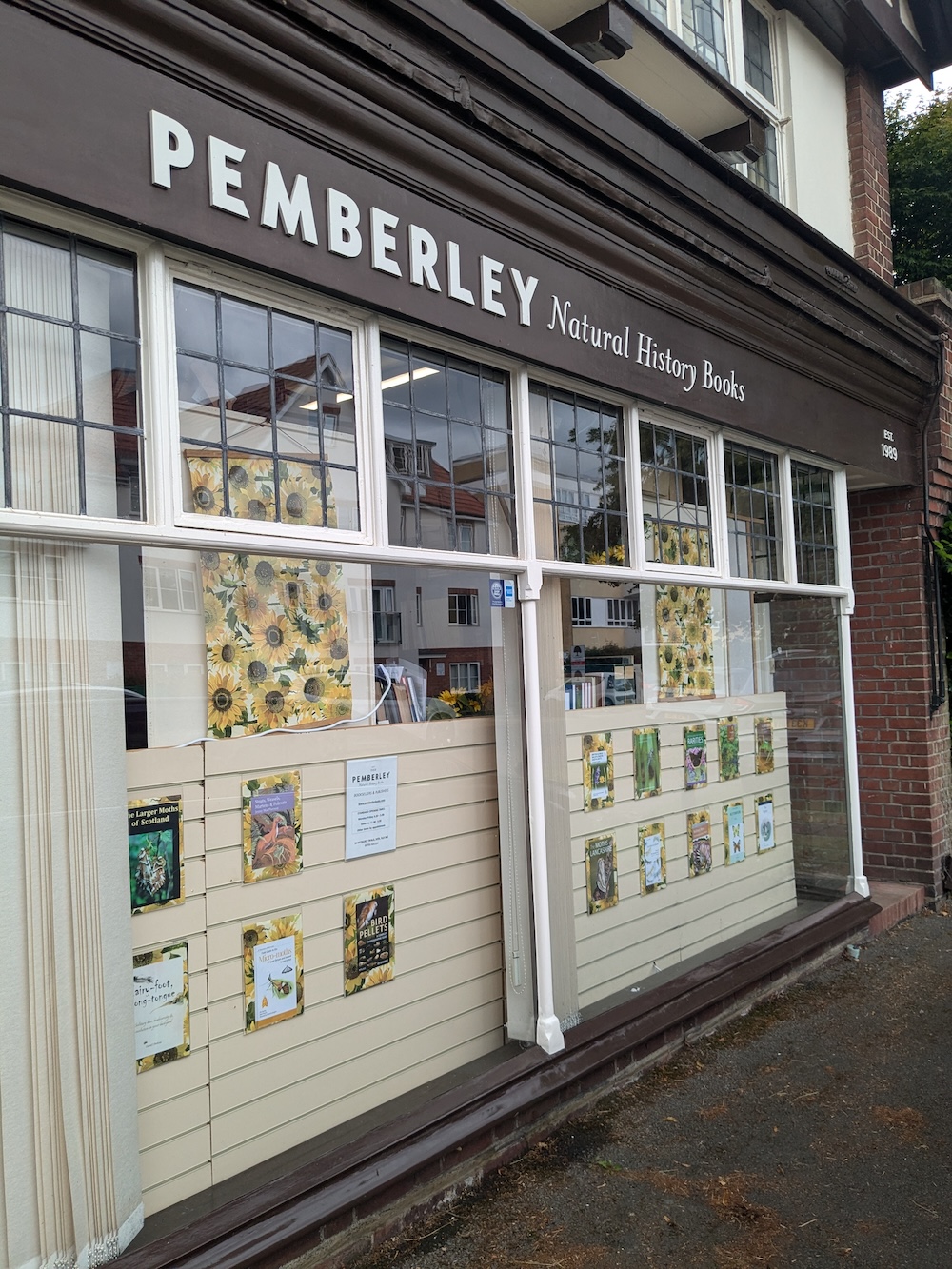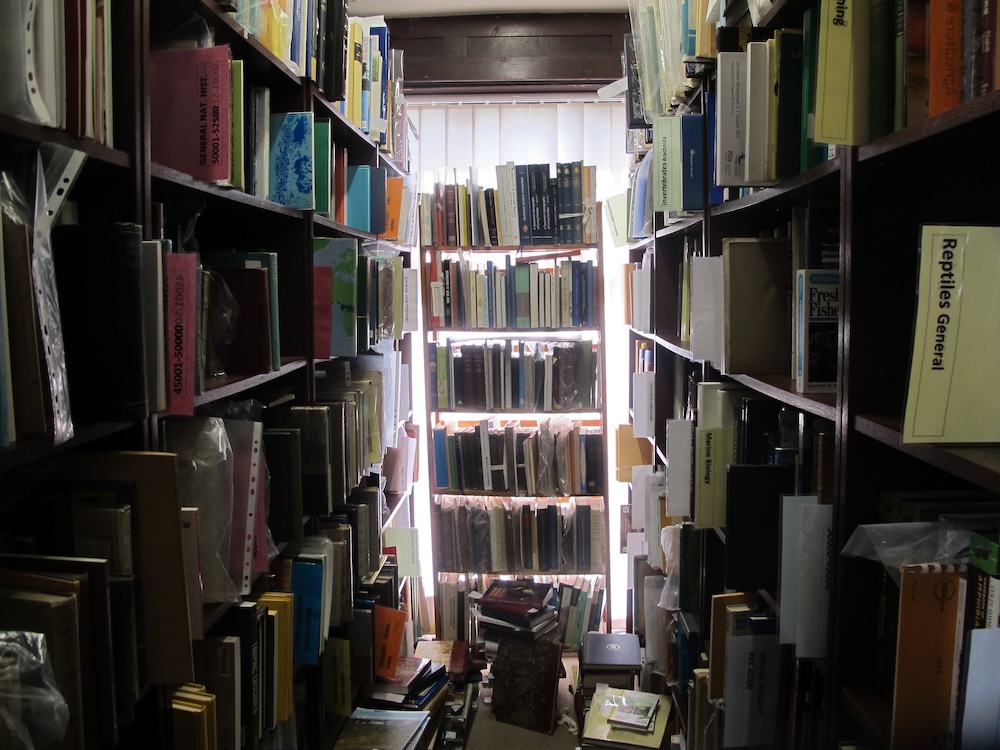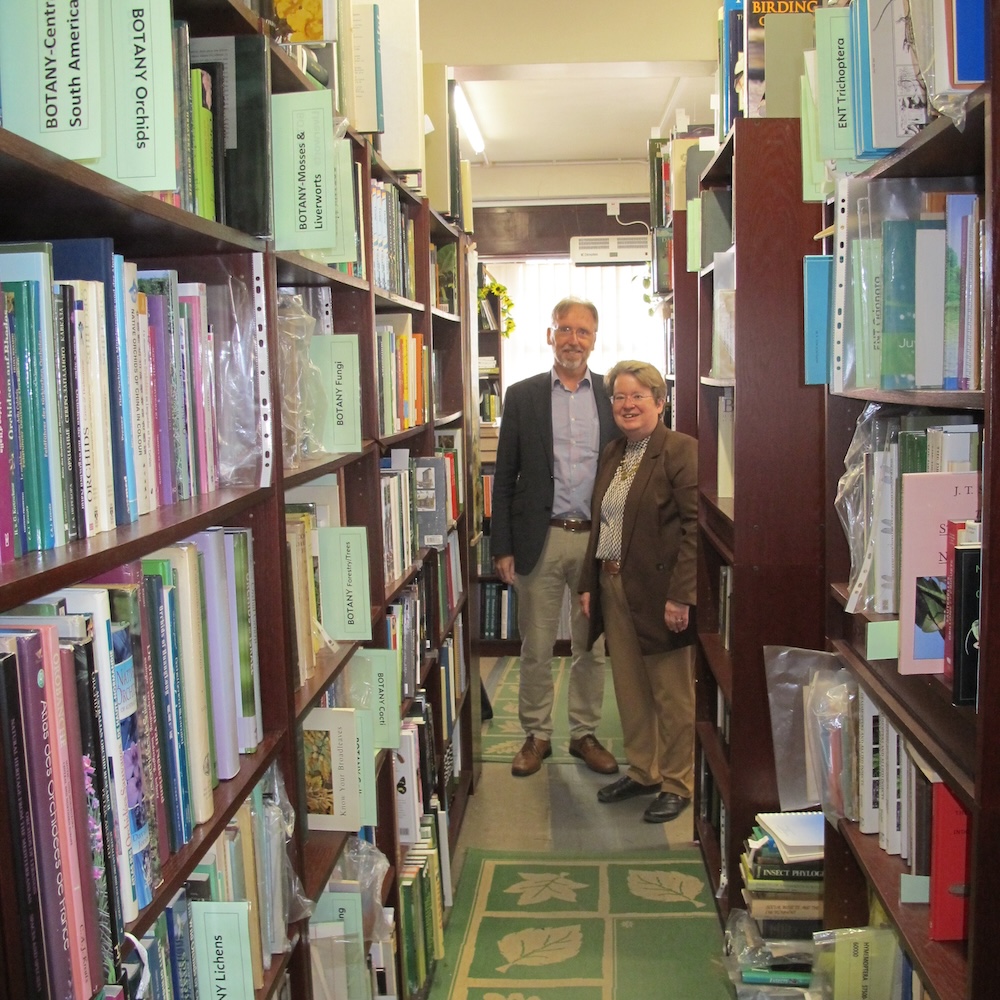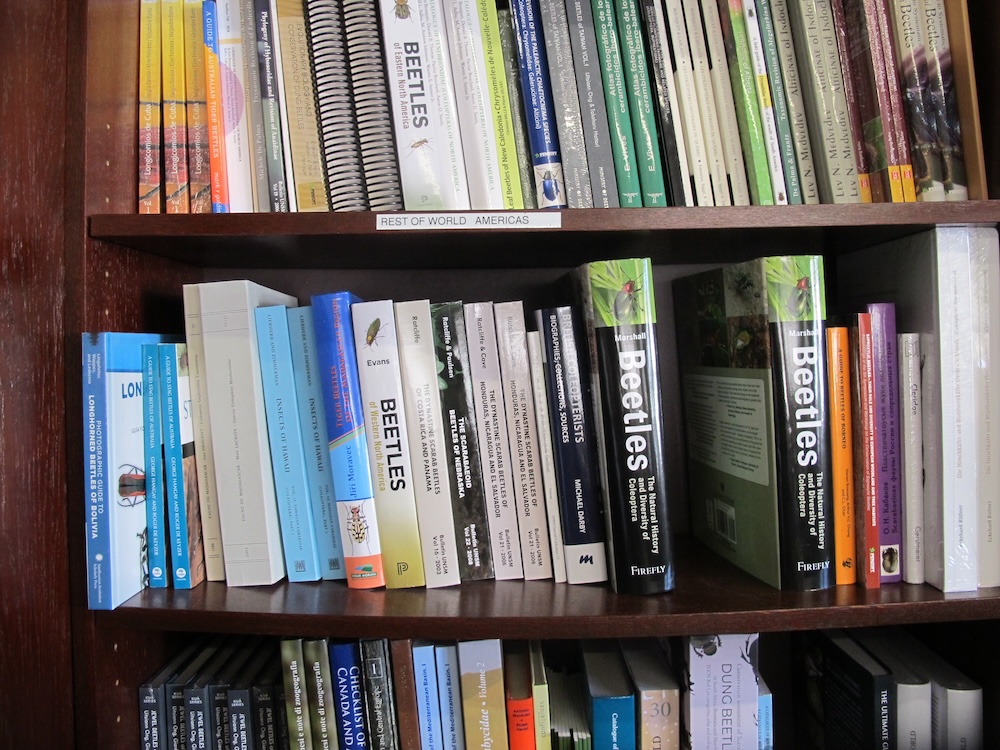Paul Bursche unearths a nature-book-lover’s paradise in Buckinghamshire.

If you are into any aspect of natural history and you also like books, then I may have found your Shangri-La. It lies in the Civil Parish of Iver in Buckinghamshire where, in a small and unremarkable residential street a few minutes’ walk from Iver Station, just along from Costcutter and a tiling shop, is Pemberley Books, which might be the greatest Natural History bookshop in the world.
I came across it by complete chance recently, walking to Iver Station for the first time and in a hurry, and then seeing a large detached house with huge ground floor windows and a sign saying Pemberley Natural History Books. It stopped me in my tracks. A bookshop — here? And a Natural History one — surely not! I’ve been into nature and conservation for many years, how could I not know about it? I stopped for a closer look at the windows where some book covers were on display. They included The Moths of Lancashire and The Solitary Bee — how could I not go in?
Apparently my reaction to walking inside is something the small team working there are used to. I was dazed…shelf upon shelf, along corridor and corridor, floor to ceiling, were just nature books. Books about bees, about moths, about birds, about lichens & mosses, about insects, about places. Guidebooks and scientific tomes. Books in Chinese about birds and moths, books in Korean on animals and places. Outside a museum, I have never seen a collection of books like it. Years and years ago, the NH section in the old Foyles was a little like this but those days are long gone.

Pemberley Books was started as a mail-order store by Ian Johnson in 1989, and he and his wife, Julie, have run the physical store since 2000. When I got my breath back, I returned to Iver to talk to them a couple of weeks later. I tell them about my first reaction. “If people come here for the first time, it’s quite common that they say they’re overwhelmed by the quantity of the books,” says Ian. “They can find it quite difficult to focus on what they’re looking for, there’s so much to look at. We try and give them a few minutes.”
Ian has been interested in insects from childhood, and met Julie while studying entomology at Imperial College, where she also became an “entomologist — someone who studies insects — by default”. After having short-term contracts at various museums (entomology is not a given as a career) Ian started a book-selling business part-time as a back-up, which then gradually took over.
After its mail-order origins, Pemberley Books (“yes we are both fans of Pride and Prejudice but did you know it was one of Darwin’s favourite books?” says Julie) was early in going online, something Ian credits for its longevity. When I mention I’d never heard of Pemberley Books, he says it started as a peer-to-peer recommendation, slowly building up their mailing lists, and then having a presence at science events. “It was the International Congress of Entomology in 1996 — which had about 3,000 entomologists from around the world descending on Florence — that was the first real big event for us. It helped us take off.”
Their customers now consist of “individuals with an interest in the subject, both amateurs and professional scientists, and institutions like museums and universities and libraries, so it covers the whole range. We also have collectors of older antiquarian books.”
“I can’t think of anyone else who does exactly what we do. There are natural history specialists who just do second-hand antiquarian books. And there are a few sellers who just do new books. I suppose our unique position is that we do the whole range from new, through to second-hand through to antiquarian. And we have a shop, which is quite unusual, isn’t it?”

The shop is, for me, what makes Pemberley utterly unique. This 1920’s half-timbered mock Tudor build was formerly a haberdashers (hence the big windows) and then an auction house. There are over 25,000 books, journals and reports here, with four other spaces being rented locally for storing more titles. Ian and Julie describe Pemberley as an online business with a shop but with the store housing so much stock plus their knowledgeable and passionate team, this seems the heart of what they do.
Running a specialist bookshop is not without challenges, with the spectre of Amazon always looming, but Ian believes in some ways it has made Pemberley hone its offering even more. “Amazon is a big challenge. In a way, it means you have to specialise more and more because Amazon is picking off all the big publishers’ mainstream titles and offering them at a low price, so it can be difficult to sell some of these, even though we will still sell them. A lot of our bestsellers I would say are from smaller publishers that Amazon don’t have access to.”
I ask Ian, as someone who has been selling books for 35 years, what would excite him now to find or obtain? He laughs: “It would be something that, when you saw it, you’d go, oh yes! Perhaps one of the 18th Century books with fine, hand-coloured plates or something with a very interesting provenance, something signed by Darwin perhaps – and yes, we have had those. If authenticated, it would add thousands to the price.”
In terms of their current stock, this includes huge-sized books on birds with hand-coloured plates by John Gould, the distinguished ornithologist, artist and publisher from the 19th Century, which are very desirable, while copies of Curtis’s Botanical Magazine from the late 18th/early 19th Century, featuring very fine hand-coloured plates of plants that were being introduced to gardens at that time, are also very valuable.
Another favourite the pair tell me about is the seventeenth century book, Insectorum sive minimorum Animalium Theatrum by Thomas Moffet (first edition in Latin, published in 1634, and later translated into English as The Theatre of Insects, or Lesser Living Creatures, 1658). Their copy is the first Latin edition. It was the first book entirely devoted to insects to be published in England, and Thomas Moffet’s daughter is thought to be the inspiration for the nursery rhyme, Little Miss Muffet!
I left Pemberley Books after both visits feeling quite elated, something to do with being in the physical proximity of the fruits of so many hours of passion and research and science all based on the natural world. I think this from Julie expresses that feeling too, with parallels to the passionate Caught by the River community: “Well, for me, in a way it’s more than the bookshop because what we provide here is a kind of understanding of nature. So, whether it’s amateurs who want to learn more about nature, or scientists who really need very, very detailed information, we’re kind of providing that. Do you see what I mean? It’s not just a book. It’s giving people the ability to understand nature at a time when everyone understands that nature is in decline and in severe peril.”

*
Find Pemberley Natural History Books at 18 Bathurst Walk, Iver, Buckinghamshire. SLO 9AZ (two minutes’ walk from Iver Station on the Elizabeth Line) or at www.pemberleybooks.com.